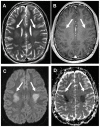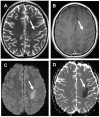Short and Long-Term Toxicity in Pediatric Cancer Treatment: Central Nervous System Damage
- PMID: 35326692
- PMCID: PMC8946171
- DOI: 10.3390/cancers14061540
Short and Long-Term Toxicity in Pediatric Cancer Treatment: Central Nervous System Damage
Abstract
Neurotoxicity caused by traditional chemotherapy and radiotherapy is well known and widely described. New therapies, such as biologic therapy and immunotherapy, are associated with better outcomes in pediatric patients but are also associated with central and peripheral nervous system side effects. Nevertheless, central nervous system (CNS) toxicity is a significant source of morbidity in the treatment of cancer patients. Some CNS complications appear during treatment while others present months or even years later. Radiation, traditional cytotoxic chemotherapy, and novel biologic and targeted therapies have all been recognized to cause CNS side effects; additionally, the risks of neurotoxicity can increase with combination therapy. Symptoms and complications can be varied such as edema, seizures, fatigue, psychiatric disorders, and venous thromboembolism, all of which can seriously influence the quality of life. Neurologic complications were seen in 33% of children with non-CNS solid malign tumors. The effects on the CNS are disabling and often permanent with limited treatments, thus it is important that clinicians recognize the effects of cancer therapy on the CNS. Knowledge of these conditions can help the practitioner be more vigilant for signs and symptoms of potential neurological complications during the management of pediatric cancers. As early detection and more effective anticancer therapies extend the survival of cancer patients, treatment-related CNS toxicity becomes increasingly vital. This review highlights major neurotoxicities due to pediatric cancer treatments and new therapeutic strategies; CNS primary tumors, the most frequent solid tumors in childhood, are excluded because of their intrinsic neurological morbidity.
Keywords: chemotherapy; neurotoxicity; pediatrics cancer.
Conflict of interest statement
The authors declare no conflict of interest.
Figures




Similar articles
-
Central nervous system complications of cancer therapy.J Support Oncol. 2012 Jul-Aug;10(4):133-41. doi: 10.1016/j.suponc.2011.11.002. Epub 2012 Apr 27. J Support Oncol. 2012. PMID: 22542045 Review.
-
Neurologic Complications of Cancer Therapies.Curr Neurol Neurosci Rep. 2021 Nov 24;21(12):66. doi: 10.1007/s11910-021-01151-w. Curr Neurol Neurosci Rep. 2021. PMID: 34817688 Review.
-
Anticancer Drugs and the Nervous System.Continuum (Minneap Minn). 2020 Jun;26(3):732-764. doi: 10.1212/CON.0000000000000873. Continuum (Minneap Minn). 2020. PMID: 32487905 Review.
-
Treatments for astrocytic tumors in children: current and emerging strategies.Paediatr Drugs. 2006;8(3):167-78. doi: 10.2165/00148581-200608030-00003. Paediatr Drugs. 2006. PMID: 16774296 Review.
-
The Road to CAR T-Cell Therapies for Pediatric CNS Tumors: Obstacles and New Avenues.Front Oncol. 2022 Jan 27;12:815726. doi: 10.3389/fonc.2022.815726. eCollection 2022. Front Oncol. 2022. PMID: 35155252 Free PMC article.
Cited by
-
Bench-to-bedside investigations of H3 K27-altered diffuse midline glioma: drug targets and potential pharmacotherapies.Expert Opin Ther Targets. 2023 Jul-Dec;27(11):1071-1086. doi: 10.1080/14728222.2023.2277232. Epub 2023 Dec 7. Expert Opin Ther Targets. 2023. PMID: 37897190 Free PMC article. Review.
-
Disease burden and healthcare utilization in pediatric low-grade glioma: A United States retrospective study of linked claims and electronic health records.Neurooncol Pract. 2024 Apr 27;11(5):583-592. doi: 10.1093/nop/npae037. eCollection 2024 Oct. Neurooncol Pract. 2024. PMID: 39279771 Free PMC article.
-
The Impact of the Early COVID-19 Global Pandemic on Children Undergoing Active Cancer Treatment and Their Parents.Curr Oncol. 2023 Feb 17;30(2):2441-2456. doi: 10.3390/curroncol30020186. Curr Oncol. 2023. PMID: 36826147 Free PMC article.
-
Long-term neurocognitive sequelae in pediatric medulloblastoma survivors treated according to the HIT protocol.J Neurooncol. 2025 Sep;174(2):401-409. doi: 10.1007/s11060-025-05070-5. Epub 2025 May 16. J Neurooncol. 2025. PMID: 40377898
-
GL261 glioblastoma induces delayed body weight gain and stunted skeletal muscle growth in young mice.Am J Physiol Regul Integr Comp Physiol. 2025 Jun 1;328(6):R628-R641. doi: 10.1152/ajpregu.00035.2025. Epub 2025 Apr 18. Am J Physiol Regul Integr Comp Physiol. 2025. PMID: 40247678
References
Publication types
LinkOut - more resources
Full Text Sources
Research Materials

